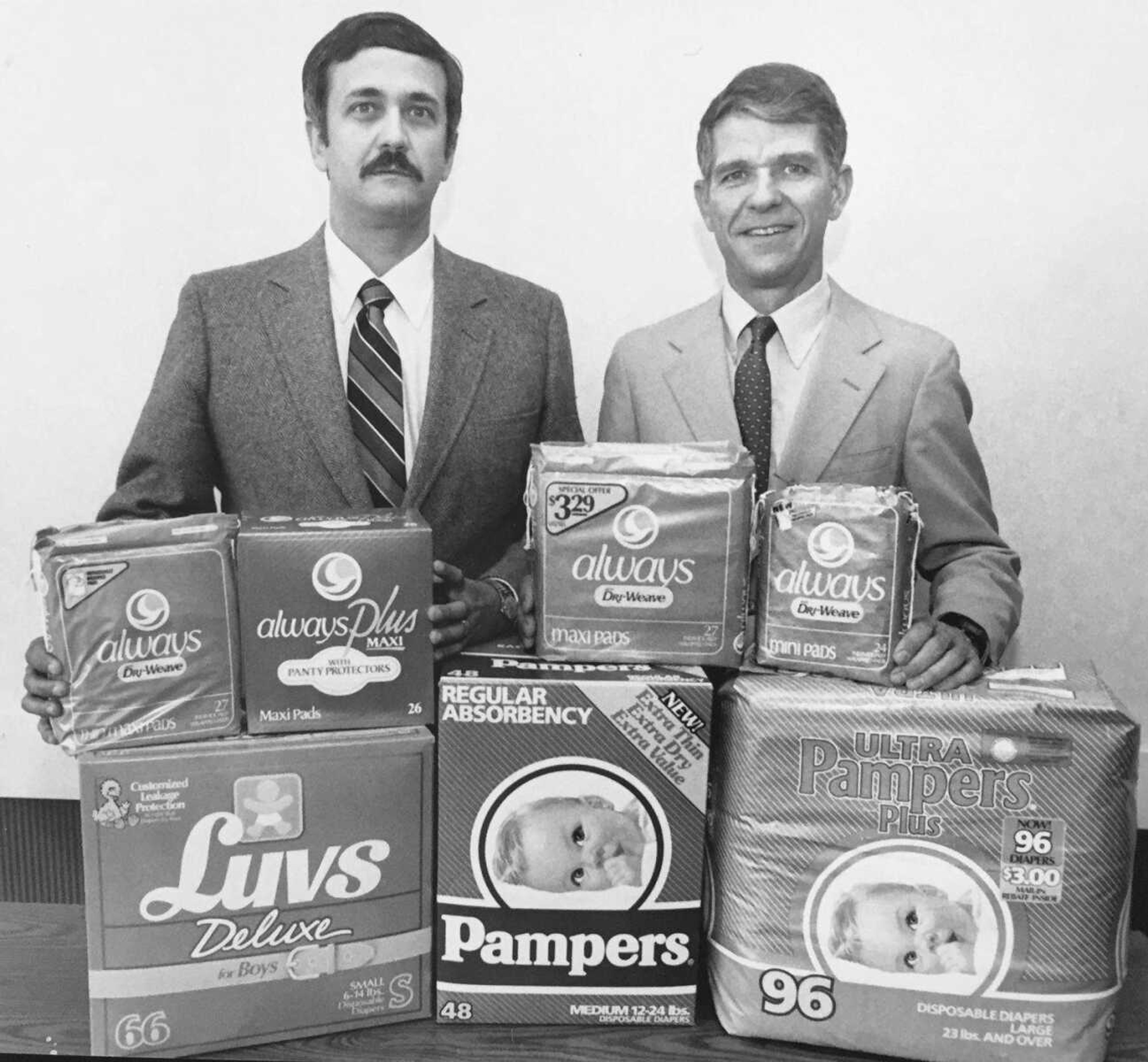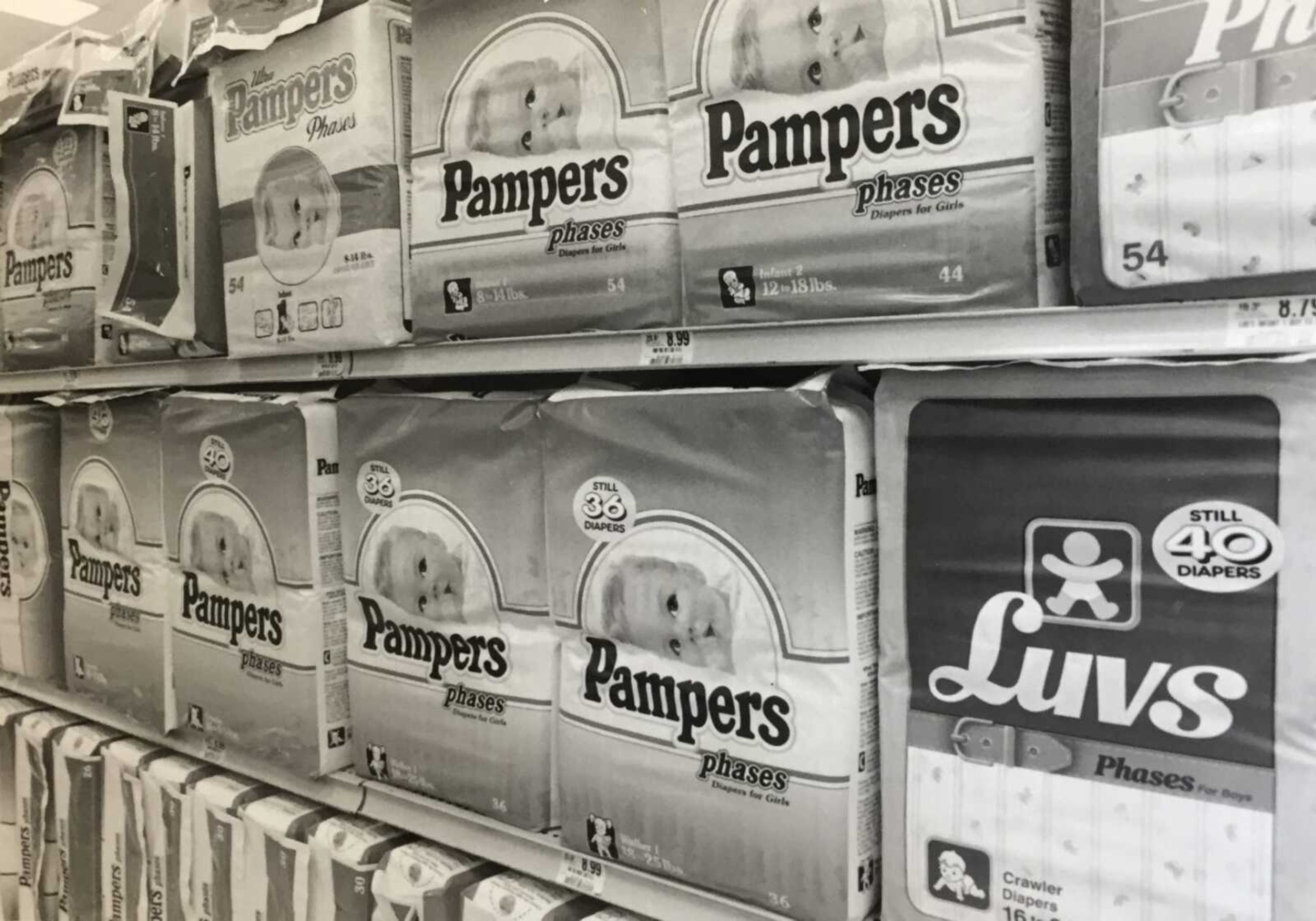Diaper dandies: Facts about disposable diapers as P&G celebrates 50 years in Cape County
Although people tend to think of disposable diapers as a relatively recent innovation dating back to the 1960s and first worn by "baby boomers" born in the 1960s, their history can be traced to the late 1800s. Between the 1880s and 1930s, the US Patent Office recorded applications for dozens of diaper innovations including fitted diaper designs, innovative fastening systems, absorbent inserts and moisture-proof covers...
Although people tend to think of disposable diapers as a relatively recent innovation dating back to the 1960s and first worn by "baby boomers" born in the 1960s, their history can be traced to the late 1800s.
Between the 1880s and 1930s, the US Patent Office recorded applications for dozens of diaper innovations including fitted diaper designs, innovative fastening systems, absorbent inserts and moisture-proof covers.
Johnson & Johnson introduced "Lister's Sanitary Diapers for Infants" in 1904 and continued to market them until 1911.
But it wasn't until the 1930s that disposable diaper development began to accelerate.
Here are some disposable diaper details that were "leaked" to the Missourian (pardon the pun) as we did research for our weekend edition story about this month's 50th anniversary of the Cape Girardeau Procter & Gamble plant:

- In 1938, the Chicopee Manufacturing Company, a subsidiary of Johnson & Johnson, introduced CHIX gauze diapers which it said was more absorbent than cotton. In the late 40s, Chicopee introduced a number of cellulose-based disposable products for hospitals and consumers including bed coverings, absorbent pads, feminine protection pads and CHUX Disposable Diapers.
- In Europe, one of the first mass produced disposible diaper was manufactured in Sweden in 1942. It consisted of an absorbent pad held in place with a pair of rubber pants.
- In 1946, a Westport, Connecticut, mother of two named Marion Dover crafted a waterproof diaper cover out of shower curtain material. Her concept was a conventional cloth diaper inserted into shower curtain plastic.
- In 1949, Eastern Airlines began providing CHUX for use by babies on long flights.
- Procter & Gamble chemical engineer Victor Mills is generally credited for the creation of the modern disposable diaper. According to P&G, Mills disliked changing the cloth diapers of his newborn grandchild in 1956 and began developing an alternative, a quest that eventually lead to the creation of Pampers, the world's first widely marketed disposable diaper and P&G's most popular brand on the basis of sales revenue. (Mills is also oversaw the development of Pringles.)
- The name "Pampers" was coined by Alfred Goldman, creative director at Benton & Bowles, the first ad agency for the diaper account, because the product "pampered" babies.
- The initial Pampers design was introduced in a test market in Peoria, Illinois, in 1961.
- P&G applied for a Pampers patent in 1964. A patent was granted in 1967.
- First Pampers line began operation in 1965 at a P&G plant in Cheboygan, Michigan; production there continued until lines were started elsewhere, including Cape Girardeau.
- In 1971, "airfelt" replaced multiple layers of tissue called "wadding" as the core of the diaper.
- Also in 1971, the pins used to fasten Pampers were replaced with adhesive tape.
- P&G began to export Pampers to Canada and Japan in the early 1970s making the brand a global product.
- The Luvs disposable diaper brand was introduced in 1977 and was P&G's first "shaped" diaper.
- Pampers reached $1 billion in annual sales in 1979.
- Pampers Ultrathin diapers were introduced in 1986 followed by Pampers Phases in 1990.
- Pampers introduced "stretchy" side panels in 1994 to improve comfort and help prevent leaks.
- The "premium" tier of Pampers was introduced in 1995 and in 2002 Pampers Premium was restaged behind the "Baby's Stages of Development" diapers with Swaddlers, Cruisers and Easy-Ups.
- By 2007 Pampers had reached $7 billion in annual sales and was P&G's leading sales brand.
- In 2010 Pampers introduced a new high-performance diaper with Dry Max, the brand's biggest innovation in 25 years. Dry Max technology allowed for the removal of airfelt paper resulting in a 20% thinner core.
- Pampers becomes the first P&G brand to generate more than $10 billion in annual sales.
- In 2017 Pampers Premium launched its "Pure Protection" line, offering hypoallergenic, dye free, perfume free and zero chorine bleached products.
- Pampers Easy-Ups introduced its Cruiser 360 product in 2018, providing a stretch waistband for less sagging as well as air-dry channels for improved dryness.
- P&G announced the development of Lumi "smart diapers" in July 2019. Lumi by Pampers, scheduled to launch this fall, is the world's first all-in-one "connected" care system and includes an app compatible with Android and IOS smartphones designed to monitor baby's activities.
- On average a baby will use about 3,500 diapers between birth and his or her first birthday. That's based on 8-12 diaper changes per day.
- Men reportedly take an average of 1 minute 36 seconds to change a diaper while women, on average, change a diaper in 2 minutes 5 seconds. (It's believed thats because women tend to spend more time interacting with the baby while men are more focused on getting the task done quickly.)
Do you crave business news? Check out B Magazine, and the B Magazine email newsletter. Check it out at semissourian.com/newsletters to find out more.
Connect with the Southeast Missourian Newsroom:
For corrections to this story or other insights for the editor, click here. To submit a letter to the editor, click here. To learn about the Southeast Missourian’s AI Policy, click here.










